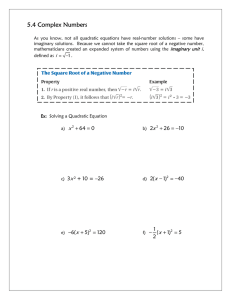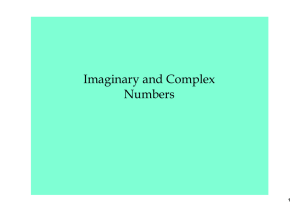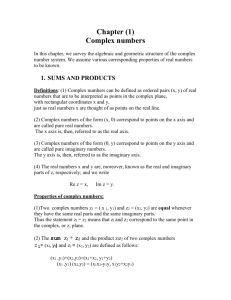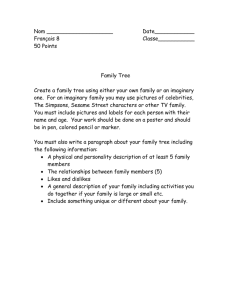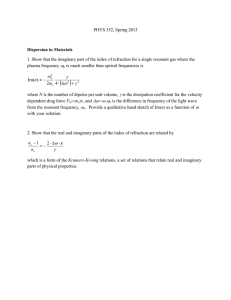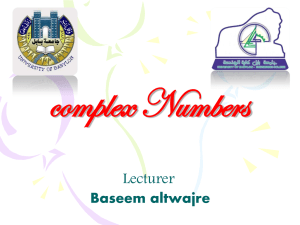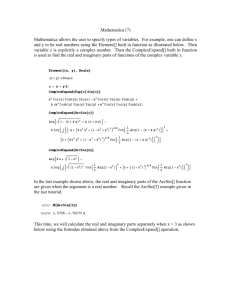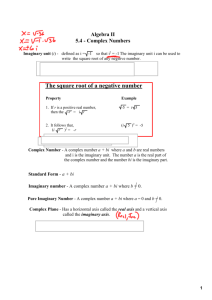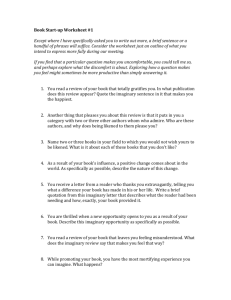Complex Numbers: Operations and the Complex Plane
advertisement
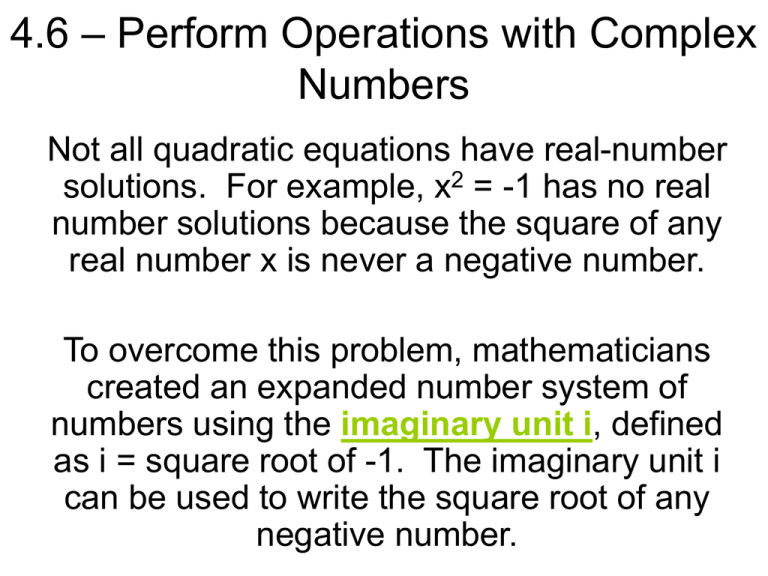
4.6 – Perform Operations with Complex Numbers Not all quadratic equations have real-number solutions. For example, x2 = -1 has no real number solutions because the square of any real number x is never a negative number. To overcome this problem, mathematicians created an expanded number system of numbers using the imaginary unit i, defined as i = square root of -1. The imaginary unit i can be used to write the square root of any negative number. 4.6 – Perform Operations with Complex Numbers Note that i2 = -1 4.6 – Perform Operations with Complex Numbers Example 1: Solve 2x2 + 11 = -37 4.6 – Perform Operations with Complex Numbers Example 1: Solve -5(x – 3)2 + 6 = 16 4.6 – Perform Operations with Complex Numbers A complex number written in standard form is a number a + bi where a and b are real numbers. The number a is the real part of the complex number, and the number bi is the imaginary part. 4.6 – Perform Operations with Complex Numbers If b does not equal 0, then a + bi is an imaginary number. If a = 0, and b does not equal 0, then a + bi is a pure imaginary number. The diagram shows how different types of complex numbers are related. 4.6 – Perform Operations with Complex Numbers 4.6 – Perform Operations with Complex Numbers 4.6 – Perform Operations with Complex Numbers Example 2: Write an expression as a complex number is standard form. a. (8 – i) + (5 + 4i) b. (7 – 6i) – (3 – 6i) c. 10 – (6 + 7i) + 4i 4.6 – Perform Operations with Complex Numbers Multiplying Complex Numbers To multiply two complex numbers, use the distributive property or the FOIL method just as you do when multiplying real numbers or algebraic expressions. 4.6 – Perform Operations with Complex Numbers Example 3: Write the expression as a complex number in standard form. a. 4i(-6 + i) b. (9 – 2i)(-4 + 7i) 4.6 – Perform Operations with Complex Numbers Complex Conjugates Two complex numbers of the form a + bi and a – bi are called complex conjugates. The product of complex conjugates is always a real number. For example, (2 + 4i)(2 – 4i) = 4 – 8i + 8i + 16 = 20 You can use this fact to write the quotient of two complex numbers in standard form. 4.6 – Perform Operations with Complex Numbers Example 4: Write the quotient 7 + 5i 1 – 4i in standard form. 4.6 – Perform Operations with Complex Numbers Example 4: Write the quotient 3 + 4i 5–i in standard form. 4.6 – Perform Operations with Complex Numbers Example 4: Write the quotient 6 + 4i 5i in standard form. 4.6 – Perform Operations with Complex Numbers 4.6 – Perform Operations with Complex Numbers Complex Plane Just as every real number corresponds to a point on the real number line, every complex number corresponds to a point in the complex plane. The complex plane has a horizontal axis called the real axis and a vertical axis called the imaginary axis. 4.6 – Perform Operations with Complex Numbers Example 5: Plot the complex numbers in the same complex plane. a. 3 – 2i b. -2 + 4i c. 3i d. -4 – 3i 4.6 – Perform Operations with Complex Numbers 4.6 – Perform Operations with Complex Numbers Example 6: Find absolute value of a. -4 + 3i b. -3i
